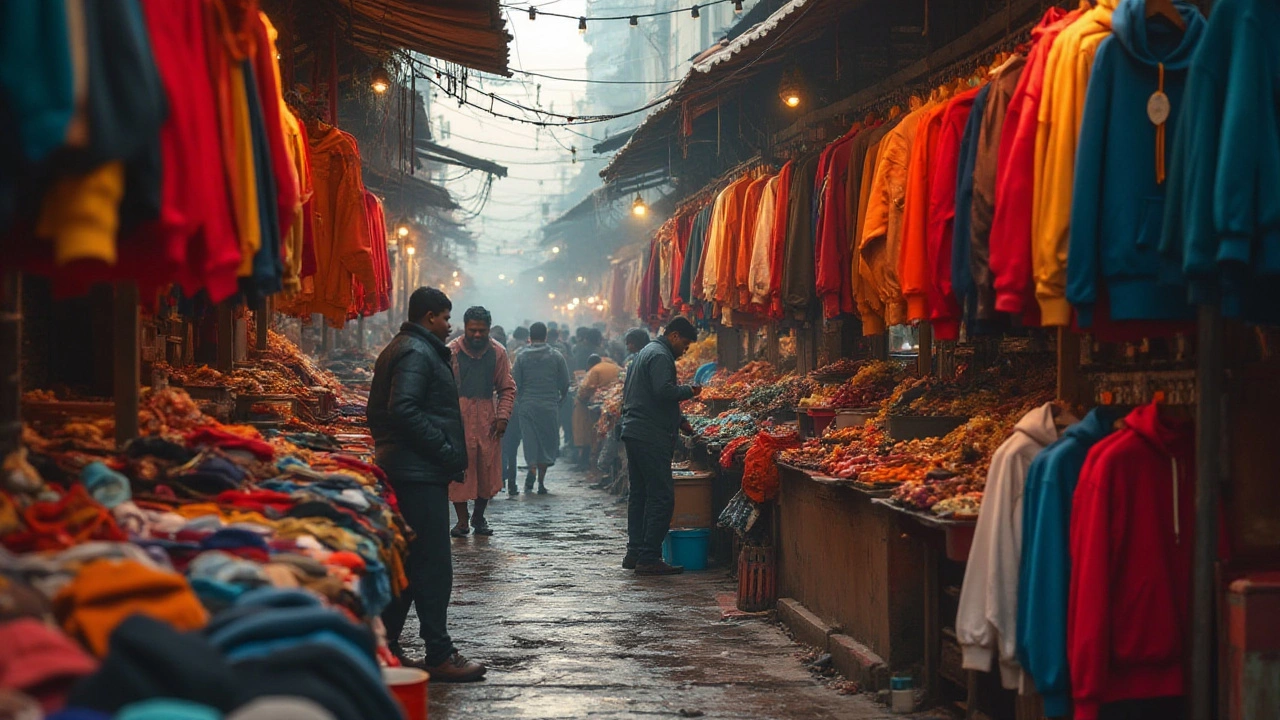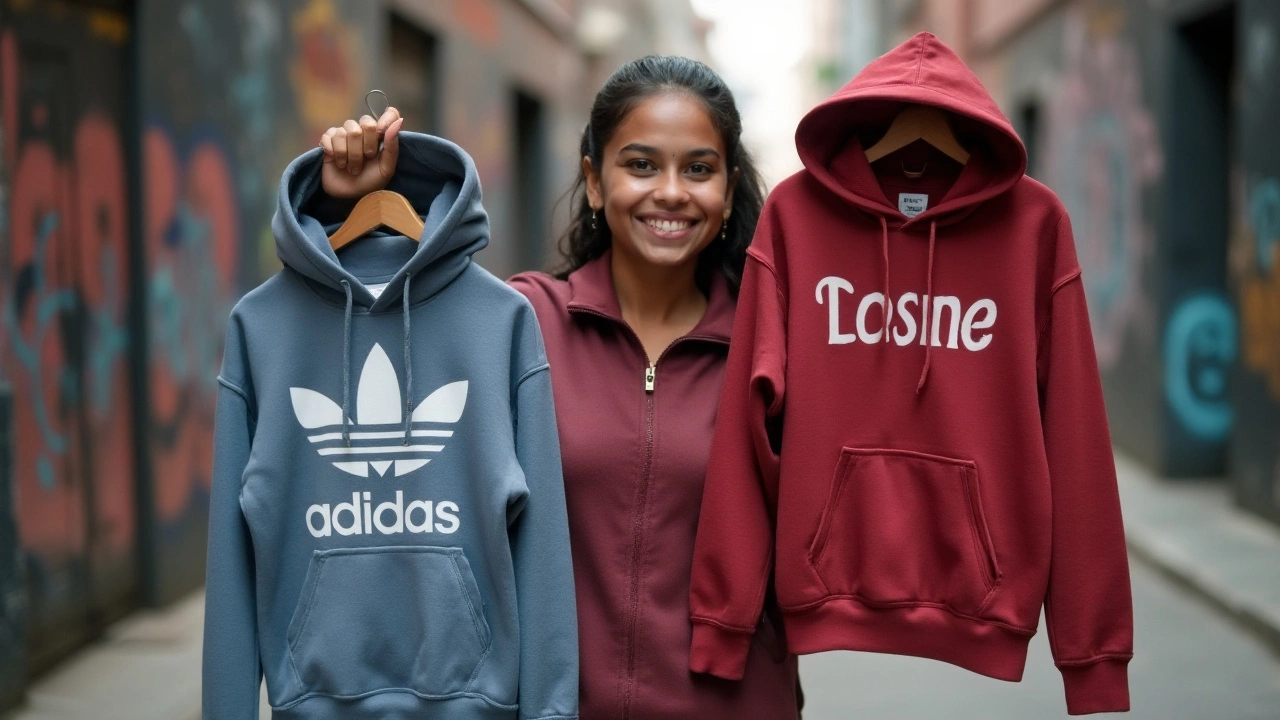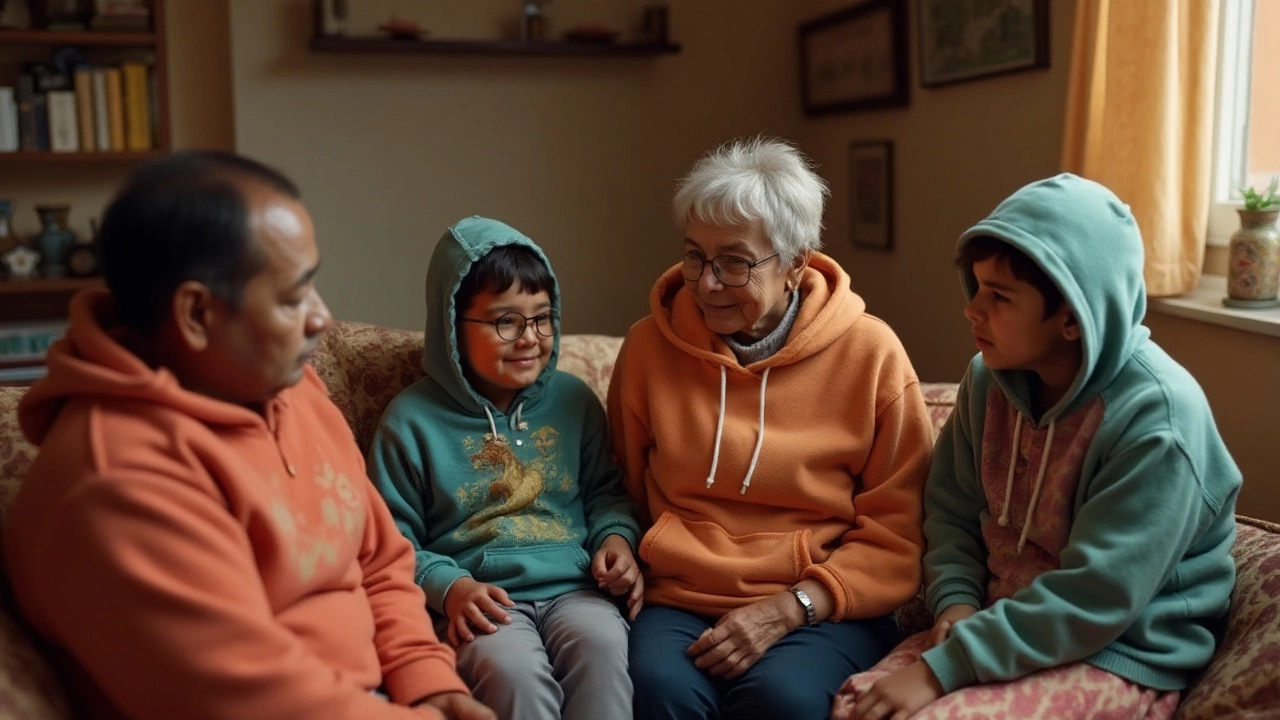Understanding the Cost of Hoodies: A Comprehensive Price Guide

Hoodies are more than just a piece of clothing; they are a canvas of self-expression and a symbol of enduring comfort. As you decide to add one to your closet, understanding their price range can save you from overspending or settling for less quality. Hoodies can vary greatly in cost, influenced by factors like brand reputation, material quality, and the intricacy of design.
Brands have a significant role in setting price expectations. A designer label can drastically affect how much you pay, compared to more affordable, everyday brands that offer excellent alternatives at a fraction of the price. Materials used also play a pivotal part. Pure cotton hoodies may ride higher on the price scale due to their softness and durability, compared to synthetic blends.
Let's unravel the current market dynamics, filled with trendy options vying for your attention, and equip you with insights to make a savvy purchase, no matter what your budget dictates.
- Factors Influencing Hoodie Prices
- Brands and Their Pricing Strategies
- Materials and Quality: What to Expect
- Shopping Tips for the Best Deals
- Current Hoodie Trends and Styles
Factors Influencing Hoodie Prices
When it comes to the cost of hoodies, there are several crucial elements at play that can dramatically shift the amount you might find yourself paying. Understanding these factors offers a clearer picture of the hoodie market and guides you through making savvy choices. First and foremost, the name behind the hoodie has a massive influence. Brands like Gucci or Balenciaga cater to a premium segment that values exclusivity and prestige; these aren't just garments, but status symbols. Purchasing a hoodie from such a high-end designer inevitably comes with a hefty price tag, often several hundred dollars.
In contrast, retail giants like H&M or Zara churn out trendy yet affordable options priced comfortably within reach for most consumers. They might not offer the same cachet as luxury brands, but they do a fantastic job at delivering style and comfort without breaking the bank. Secondly, the material composition is a key determinant of hoodie costs. Consider a hoodie made from 100% organic cotton—its softness and resilience over time make it a desirable choice. However, it’s also more expensive to produce compared to a hoodie made from a blend that includes polyester or elastane.
“An organically farmed cotton hoodie can cost up to twice as much as synthetic alternatives,” notes Jane Richards, a textile expert at the Sustainable Fashion Initiative.
Then there’s the element of design and functionality, which dramatically affects pricing. Hoodies with intricate embroidery, unique prints, or logowear that resonates with sports and pop culture fans can charge premiums based on demand. Think of special collaborations, like those between renowned artists and brands, often emerging as collectible items. Additionally, the place of manufacture can also alter price points significantly. Hoodies manufactured in countries with higher labor costs, like the United States or parts of Europe, tend to be priced higher owing to ethical production practices and fair wages paid to workers.
Marketing efforts and brand perception can not be overlooked either. The more a brand spends on marketing its hoodies through influencer partnerships, prime advertising placements, or elaborate launch events, the greater its impact on the product's retail price is likely to be. Last but certainly not least, global circumstances like supply chain disruptions or increases in raw material costs inevitably trickle down, affecting retail prices, sometimes quite swiftly. Whether it’s inflation or shortages, these can unexpectedly shift how much you might have to pay for your next favorite hoodie.
Brands and Their Pricing Strategies
When it comes to hoodie prices, brands play a crucial role. Each brand has its unique approach to pricing, often reflecting its market position, target audience, and brand ethos. For well-known designer brands like Gucci or Balenciaga, buying a hoodie can be akin to purchasing a piece of wearable art. These brands often incorporate luxurious materials, intricate designs, and sometimes even limited edition releases that skyrocket their market value. These high-end brands typically cater to consumers who value exclusivity and are willing to invest heavily for a piece of fashion history.
In contrast, mid-range brands such as Nike or Adidas offer dependable quality with a focus on performance and comfort. These brands strategically price their hoodies to balance affordability with brand prestige, maintaining a loyal customer base who appreciate both the style and practicality. Their pricing strategies often include seasonal sales or collaborations with celebrities and designers to attract a broader audience, making their offerings more accessible to the masses without compromising on the brand's core values.
Then there are the emerging brands and fast fashion retailers like Zara or H&M that compete on price points, often producing similar styles at a fraction of the cost. Their quick-turnaround production processes allow them to rapidly introduce trendy styles inspired by high-end fashion at an affordable price, appealing to younger, budget-conscious demographics. Many of these brands employ volume-centric strategies—aiming for high sales numbers rather than high prices—to maintain profitability while addressing the desires of fashion-savvy consumers.
As buyers, understanding these pricing strategies offers insight into what you're actually paying for, whether it's a brand's heritage, their innovative design, or their widespread popularity. A study revealed that 67% of consumers perceive a direct correlation between price and quality, highlighting how pricing strategies do influence perceptions. However, savvy shoppers often transcend these perceptions, seeking value based on personal style preferences over brand influence alone.
As noted by fashion analyst Lisa Johnson, "In the world of fashion, a hoodie is not just a hoodie. It's a cultural statement piece, and brands know exactly how to leverage this in their pricing."
To navigate the colorful landscape of hoodie buying, it's important to recognize these brand-induced price variances. For many, the ultimate choice boils down to balancing one's budget with personal style preferences and aligning these with a brand's offerings. Whether splurging on a high-end piece or savoring the thrill of an affordable find, the right hoodie awaits each discerning shopper when they understand the brand's positioning and pricing rationale.

Materials and Quality: What to Expect
When it comes to hoodie prices, one can't overlook the significant role that materials and quality play in determining the cost. They are the building blocks of any garment, directly affecting durability, comfort, and the overall feel of the product. There is a diverse array of materials used in hoodie production, each bringing its unique properties and price points. Cotton is perhaps the most common choice, known for its softness and breathability. Hoodies crafted from 100% cotton tend to be more expensive due to cotton's natural quality and comfort. They are highly prized for their breathability and moisture-wicking ability, making them ideal for daily wear and those leading active lifestyles. However, while cotton is highly desired, it is also prone to shrinking and may require delicate care.
Another popular option is the cotton-polyester blend, which combines the best of both worlds. The addition of polyester helps in reducing shrinkage and creasing, adding to the garment's versatility and ease of maintenance. These hoodies often come at a middle-range cost, offering an equilibrium between comfort and practicality. Such blends are often favored in sports and activewear brands, providing durability without sacrificing comfort. On the other hand, luxury and designer brands may opt for more exclusive materials like cashmere or merino wool, elevating both price and prestige. These natural fibers offer exceptional warmth without adding weight, ideal for cooler climates. However, they do come with a hefty price tag, rewarding buyers with unparalleled softness and increased longevity when cared for correctly.
"Quality fabrics are an investment. They offer not just protection, but an emotional comfort that garners brand loyalty," states a fashion expert in an insightful interview with Vogue. This underscores the impact of fabric quality not just on usability but on brand identity.
Moreover, an often overlooked material aspect is the lining. Hoodies with fleece lining or additional padding can be considered premium, especially beneficial during the winter months. Fleece-lined hoodies particularly offer extra warmth and are typically priced higher due to the additional material and craftsmanship involved. As we all know, when it comes to fabric, the devil is in the details. Examining stitching, seam strength, and garment weight can be tell-tale signs of superiority in manufacturing, highlighting quality even in blends or synthetic options. Ultimately, understanding the implications of these choices not just influences cost but ensures the purchase aligns with the individual's lifestyle, climate, and personal brand preference.
Shopping Tips for the Best Deals
When hunting for the perfect hoodie without breaking the bank, it's essential to be equipped with practical shopping strategies. To start, always keep an eye out for seasonal sales. Retailers often slash prices significantly during clearance periods at the end of each season. Hoodie prices drop as new collections arrive, making it an ideal time to score stylish pieces at a fraction of their original cost. Additionally, subscribing to newsletters from your favorite brands can provide early access to sales, exclusive discount codes, and first dibs on limited-time offers.
Let's not forget the power of online outlets and discount websites. Platforms like ASOS and Nordstrom Rack often feature a range of affordable hoodies from popular brands, and places like eBay or Poshmark can offer decent second-hand options. Compare prices across several websites; this little step can save you quite a bit, offering competitive pricing from different sellers. It's also worth checking if there's a possibility for price matching, a service many large retailers offer, which allows you to take advantage of the best deal available.
Take other approaches into account, such as using loyalty programs that accumulate points on each purchase. These points can convert into hefty savings, especially if you are a regular shopper. It's useful for keeping eyes on coupons in magazines or mobile apps like Honey that automatically apply any available vouchers at checkout. Additionally, it's good to scope out flash sales — sudden, short-term discounts on select items. Many websites have a dedicated section for these, so checking frequently can pay off.
Moreover, don't underestimate the value of physical stores. Visiting outlet malls or factory stores can sometimes yield significant savings that online platforms miss. You get to see and feel the hoodie, ensuring it matches your comfort and style preferences. Shopping in thrift stores occasionally offers vintage or unique finds at much-reduced prices. However, when purchasing from these places, ensure you inspect the hoodie for any defects or signs of wear.
Emily Schuman of Cupcakes and Cashmere once said, "The art of shopping isn't about spending the lowest or the highest—it’s about making sure that every single purchase feels just exactly right."
On the off-chance you’re purchasing a hoodie as a gift, always verify the store's return policy. Specifically, be aware of return periods and restocking fees, which can vary widely. This kind of due diligence ensures you have a safety net if the hoodie doesn't fit well or doesn't match expectations. Balancing between trends and personal style preferences is another layer worth considering as you evaluate potential purchases, so your wardrobe remains engaging yet authentic.

Current Hoodie Trends and Styles
As we dive into 2025, the world of hoodie fashion has embraced an eclectic blend of textures and silhouettes that redefine casual chic. This year's trending styles are bold, versatile, and more innovative than ever. Notably, oversized hoodies with a drop-shoulder cut continue to dominate the fashion scene, providing both a sense of cozy comfort and modern aesthetics. They pair easily with everything from jeans to tailored trousers, making them a must-have item for those seeking both style and function.
Sustainability remains a buzzword in the fashion industry, and the hoodie market is no exception. Many brands are now focusing on eco-friendly materials, such as organic cotton and recycled polyester, a move praised by fashion icons and environmentalists alike. Customers are becoming more conscious of their environmental footprint, which influences market trends considerably. There's an increasing demand for durable pieces that last longer and have minimal environmental impact.
Personalization has also become a key trend, allowing individuals to add their unique touch to their hoodies. Whether it’s through embroidered graphics, custom patches, or vibrant dye jobs, people are looking for ways to stand out from the crowd. An emerging favorite is the resurgence of tie-dye, a nod to retro fashion that has seen a colorful revival. Alongside this, hoodies with vintage prints or band logos are making a strong comeback, celebrating the nostalgia of past decades yet fitting seamlessly into contemporary wardrobes.
Among the practical styles, tech-embedded hoodies are gaining popularity, offering functionalities like built-in headphones or heated linings for those on the go. This speaks to a consumer base increasingly interested in integrating technology with everyday wear. Meanwhile, gender-neutral designs are becoming a standard, allowing for fluidity in fashion and making hoodies accessible to everyone, regardless of gender.
"The trend towards personalization in hoodie fashion indicates a desire among consumers to showcase their individuality. This shift reflects broader societal movements towards personal expression and customization," said a fashion editor from Vogue.
Color palettes for this year revolve around earthy tones, vibrant pastels, and classic monochromes. Bold colors like mustard yellow and forest green complement muted shades, creating a balanced wardrobe. Unique fabric blends such as velour and fleece are making appearances, adding texture and a touch of luxury to everyday styles.
| Style | Description |
|---|---|
| Oversized Drop-Shoulder | A relaxed fit with exaggerated shoulders, ideal for a trendy and comfortable look. |
| Eco-Friendly Materials | Utilizing sustainable textiles like organic cotton. |
| Personalized Designs | Incorporating individualistic elements like custom graphics or dye jobs. |
| Tech-Embedded | Featuring technological enhancements, such as integrated headphones. |
In essence, today's hoodie trends blend practicality with style, technology with tradition, and customization with sustainability. It's an exciting time for this classic garment, as designers continue to innovate in ways that inspire while addressing the needs of a changing consumer landscape.